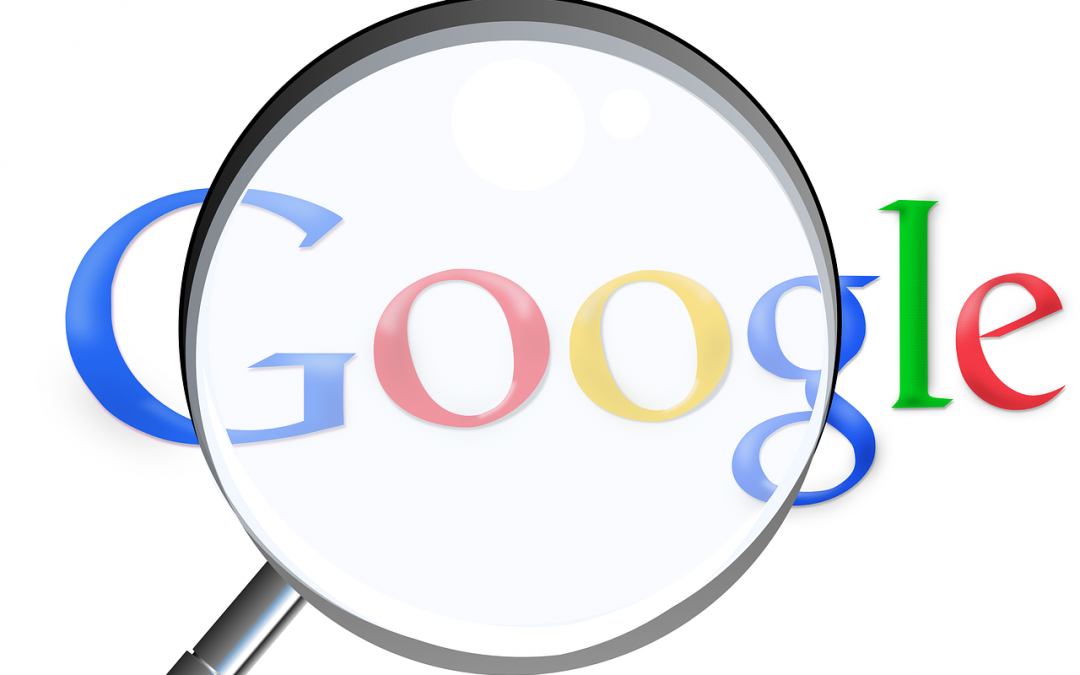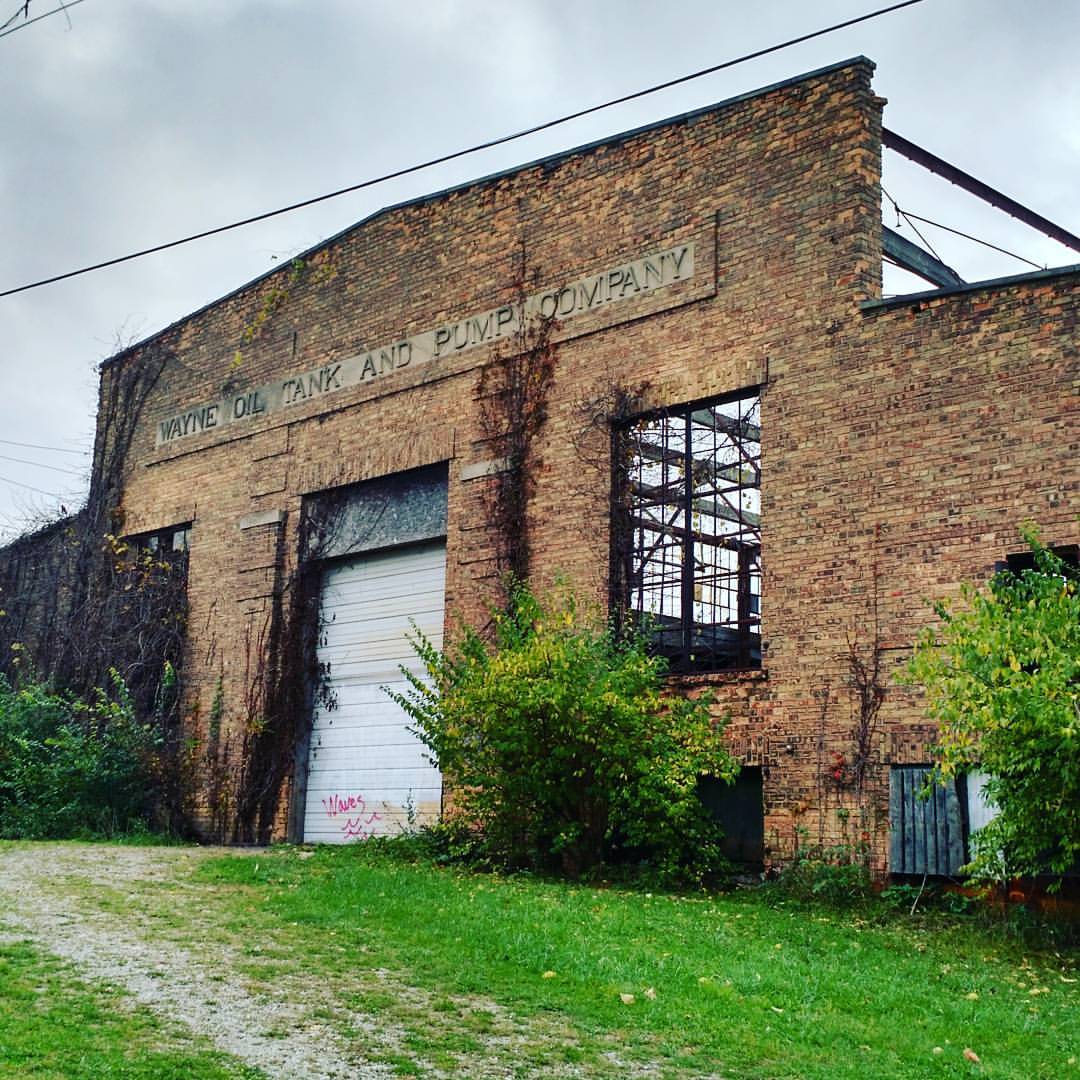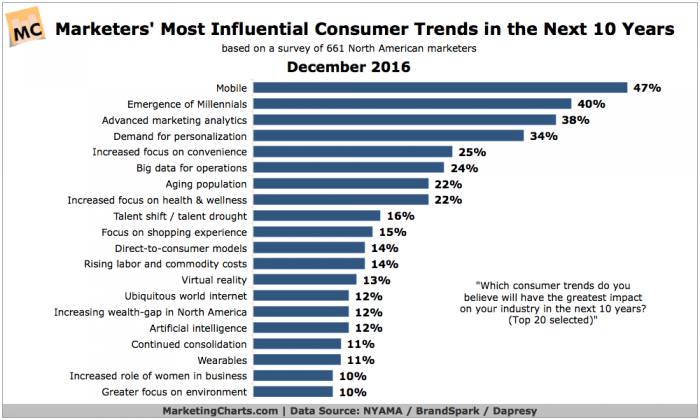
by Scott Howard | Mar 15, 2018 | Marketing and Advertising Insights, ScLoHo's Media, ScLoHo's Web World, The Not-So-Secret Writings of ScLoHo
We are well into 2018 and I have a very important question:
How’s Your Online Visibility?
When was the last time you did an overhaul of your website? If it’s been more than 18 months, your business is hurting.
I sell a variety of radio and digital advertising solutions and there are times when I tell people before we can send people to your website, you need an update.
Here’s a few key items to keep in mind in 2018:
Mobile has overtaken laptop and desktop. This means instead of sitting down with our computer to look for stuff, we are more likely to grab our phone. Your website has to be more than “mobile friendly”. Think Mobile First.
Responsive websites are the new norm instead of having a separate mobile site and a more robust desktop website with the exception of e-commerce sites. When I say Mobile First, assume that the first visit someone is going to have to your website is that tiny screen on their phone, not the big desktop monitor.
So design your website for the best UX (that’s User Experience) on Mobile First and then include a full experience for the minority of folks who will use their computer to visit your site.
Next up, is Voice Search is taking over the world. All the Apple Fans thought it was cool that they could have a conversation with Siri until I showed them how I could also get what I needed by talking to my phone with the “Ok Google” technology.
But that was just the beginning of voice activated devices. With Alexa and all the others battling it out to be our best buddies in the artificial intelligence world, is your website and company up to the latest standards?
Search Engine Optimization is part of it, but if you are only using methods that were the gold standard in 2015 or before, you risk getting lost online. Searches are based on so much more than keywords these days. Search is personalized to each of us. Your previous browsing and search and your location is all known and while that helps you find what you are looking for when you are browsing, it has also changed the rules for a business to be found online.
Google continues to penalize old and outdated websites and web-pages and is always looking for the best content to serve you and I as consumers, not you and I as business owners and marketers.
How are you using Social Media for your business? Are you using Facebook Live? Do you know how to create engaging content? Do you know the differences between Likes and Engagement? Is your LinkedIn profile set up properly?
When was the last time you Googled yourself? Do it. Also on Bing, Yahoo, and YouTube and Facebook.
Are you listed on the review sites? Are you monitoring and responding to reviews?
I know this is a lot to consider but it really is important stuff.
Some of these things you cannot do yourself, you will need to pay professionals to do it. And even though I’m a professional at some of this, and I can help guide you, most of my recommendations will involve hiring people and companies besides myself. I have contacts and connections to people and companies that are good at these things and stay on top of it so you can focus on what you do best in running your business.
Remember my original question: How’s Your Online Visibility?
Need some help or guidance on what we’ve talked about today? Reach out to me.
And here’s a study just released about the smart speakers that are growing in popularity.

by Scott Howard | Jan 18, 2018 | Marketing and Advertising Insights, ScLoHo's Collective Wisdom, ScLoHo's Web World, The Not-So-Secret Writings of ScLoHo
The Google Advertising Myth continues to live.
Last month, a friend of mine that I see every Wednesday morning at a Business Network International breakfast meeting was telling me and another friend that the only advertising that worked for him in 2017 was Google.
His perception that Google works is based on a false premise. I wrote about it last year, in Your Digital Marketing is B… And then I read another expert Roy Williams who also talked about this in his weekly Monday Morning Memo newsletter.
Here’s what Roy says:
“The thing that makes me look at the ground, shake my head and sigh is the dangerous myth of the Zero Moment of Truth. But then again, Google is the new Yellow Pages, so it shouldn’t surprise us that they’ve repackaged and renamed the old Yellow Pages scare tactic.
The fundamental premise of the Zero Moment of Truth is that the customer is going to go online when they’re ready to purchase what you sell.
I have no argument with that.
But the dangerous, underlying assumption is that all contenders are equal during the Zero Moment of Truth. But that simply isn’t true.
The company most likely to get the click, the call, and the sale is the company the customer has heard of and has good feelings about.
The tortoise patiently wins the hearts of the people long before the race is begun. He says he’s ‘bonding with tomorrow’s customers’ .
‘Stupid tortoise,’ says the rabbit, ‘he still believes in branding.’
‘Knowledge is power’ is another dangerous myth.
It doesn’t matter what you know.
What matters is what you do with what you know.
So what are you going to do?”
-Roy Williams, Monday Morning Memo, December 18, 2017
I’m going to dig deeper into this subject soon with examples of short term versus long term which will include exceptions, to give you some guidelines and I’ll go back to examples from my B.N. I. group.
I also had a great discussion with another friend regarding human relationship based marketing that should be used as the foundation of what you do, no matter what tactic you employ.
In the meantime, let me remind you that making advertising decisions for your business are usually best left to the experts and professionals. That is what I do. The home page of my website specifically says I do Media & Marketing Coaching & Consulting. You can be the expert at your specialty and I’ll stick to mine. But when I need your expertise, I’ll call you and you can contact me when you need my kind of help.

by Scott Howard | Aug 9, 2017 | Marketing and Advertising Insights, ScLoHo's Web World, The Not-So-Secret Writings of ScLoHo, WOWO Fort Wayne Radio Advertising with Scott Howard
GeoFencing is a term that I have used regularly and repeatedly for the past 3 years and apparently others in the advertising and marketing world have too.
But it has caused a ton of confusion because some people who are selling this service don’t understand how it works, what it does and so today I’m here to set the record straight.
Save this article or podcast as a reference so when someone tries to sell you GeoFencing, you know if they as much or more than they do.
Here’s a modern day explanation of GeoFencing:
GeoFencing is drawing a border or fence around a location that is then used to identify potential customers because they stepped inside the GeoFence.
Here’s how I offer GeoFencing as a digital marketing tool:
Along with the radio options I offer with WOWO Radio to invite potential customers to your business, I also have a number of online options I offer through the Federated Digital Solutions division of our company.
Custom Audience Targeting has been proven to be one of the most highly effective online options. We use Custom Audience Targeting to determine who to serve online digital banner ads to. Depending on the business, we will use a combination of the following 4 tools to find the right people.
- Site Retargeting. This is serving ads to people who have visited your website. We know that they are potential customers because they have visited your website and we want to keep you Top Of Mind after they leave, because a majority of first time visitors don’t buy on the first visit.
- Search Targeting. These people are qualified because they did an internet search for you or the products or services you offer. Search Targeting is an exclusive offered by our vendor partner for Digital Display Banner ads. Keywords are an important criteria in finding the right people using this tool.
- Contexual Targeting. Also called Content Based Targeting. Potential customers are identified because of their browsing habits. The content someone reads online in an article or email has keywords and phrases that match the words and phrases for my advertising partner.
- GeoFence Targeting. When someone enters a certain geographic zone, border or fence, they are qualified to receive your ads.
I don’t sell these four tools separately. We offer them as a complete solution, a Custom Audience Targeting solution to find the right people to serve ads to for your business to drive them to your website.
Here’s why we do it this way:
Each business is different and there is no “one size fits all” formula for using these 4 tools.
A business has to have enough organic traffic that it makes sense to allocate enough ads to the site retargeting tool and at the beginning of a campaign, many businesses don’t have enough.
That’s why the other 3 tools are also used. Or at least 2 of the tools are also used.
See, GeoFencing isn’t appropriate for all business either. Why?
Some business don’t have a physical location that their customers come to. A plumber for example. When you need a plumber, you don’t go visiting plumbers and ask them to follow you home. You call them and usually you have no idea where their shop or office is.
I do have a couple of examples of some really cool GeoFencing campaigns that were highly effective. One is a doctor who GeoFenced other doctors. My doctor has a different business model and the offices we GeoFenced were using the traditional business model. We were able to track new patients that came to my doctor after visiting the GeoFenced doctors.
Pretty cool, right?
How does your phone identify you as someone who qualifies to see these ads?
Simple answer: Location Services.
This is built into all of our smartphones and most of the apps on our phone use it.
Your phone’s technology is telling others where you are.
When you (your phone) goes certain places, you are being tracked.
Who is tracking you?
Facebook for one. Google for another. Any app that relies on knowing where you are to provide you with important information.
I just took a quick check of the apps on my android smartphone and some of the apps that are tracking me include:
- My camera
- Chrome web browser
- My Contacts
- Emergency Alerts
- Facebook
- my bank app
- all things Google
- my hair cutting app
- Xfinity Hotspots app
- iHeart Radio app
- LinkedIn app
- Google Maps (duh)
- Facebook Messenger app
- My car insurance app
- Panera app
- Starbucks app
- Google Photos
- Redbox app
- Regal Cinema app
- the Weather Channel app
- Twitter
- Instagram
- YouTube
- Yelp
- a couple of local news apps
- a couple of national news apps
Turns out that nearly every app on my phone is tracking me. And the same is true for you.
The Location Services app built into your phone that communicates with the GPS systems that allows your phone and the apps to know where you are so your phone and the apps can tell you where the closest Starbucks or Panera is located without you having to know where exactly you are.
This location service also is important when there is bad weather heading our way to alert us, or if we are using our phone’s navigation service to guide us down the road. When you post on social media and it asks you if you want to include your location, that’s all possible due to this same technology.
GeoFencing by itself is not a marketing solution. But it is a marketing tool that when used properly can be pretty powerful at finding the right people to target your online ads to.
Before wrapping this up, I’m going to clear up a couple more misconceptions about GeoFencing and the rest of this Custom Audience Targeting that I offer.
- Everyone that walks into your GeoFence is not necessarily going to start receiving your ads. You are buying a certain quantity of ad impressions and there are usually going to be more people who enter your GeoFence than you have bought ads for. I can show you the formula we use that estimates the number of people you will reach with your ads.
- The ads don’t just pop up all over your phone instantly. That would be annoying. However there are plenty of apps that are advertising supported along with websites that have space for ads and that’s where your ads show up.
- There is a Huge Difference in the methods and capabilities of both the companies and the sales people that offer digital advertising campaigns. I have seen the programs offered by local Fort Wayne radio stations, the “phone book companies (Dex & Hibu) and independent digital advertising agencies, even some long standing traditional ad agencies and through thorough research and verification by myself and other experts, in nearly every case, no one was able to provide a better service than what I have with the Custom Audience Targeting Digital Ad Solution with Federated Digital.
That’s enough for now, want to know more and see if this is appropriate for your company? Reach out to me and let’s talk.

by Scott Howard | May 4, 2017 | Marketing and Advertising Insights, ScLoHo's Web World, The Not-So-Secret Writings of ScLoHo
Today we’re going to talk about your business credibility, or at least a part of it.
Is Your Business Homeless?
Before the internet, most businesses had what are known as brick and mortar locations, a storefront or at least a physical location. There were some exceptions, but for the vast majority of businesses, your physical location was a key component of establishing credibility.
Then the internet came along and has slowly been changing our world. I recall the Windows 95 computer operating system and dial up internet connections that used a hardwired telephone landline to connect to the World Wide Web and it was pretty cool to be visit websites from that big clunky computer at home.
Enough reminiscing, those were not really the good old days of the internet. Although every month I run into business people who are seemingly stuck back in those days.
Your business needs a website.
I’ve been saying that for over a dozen years.
There are some businesses that still don’t have a website.
Your business not having a website is the equivalent of your business being homeless.
If your potential customers cannot find you online with a simple Google search, your business does not exist. Say you are a plumber. If I ask Siri to find me a plumber and you don’t have a website, according to Siri, you don’t exist, but your competitors do.
Personally my phone is not an iPhone but an Android and I can talk to it and it does the same, maybe better than Siri.
For those of you who are stubbornly resisting getting a website for your business, you might as well sell your business to someone who will bring it up to speed before your business dies a slow agonizing death.
Next, I want to talk to those of you who have not updated your website in the past 5 years. Your business may not be “homeless” online, but your business presence is most likely obsolete.
You are not alone. I see dozens of outdated websites every month. This is hurting you more than you realize.
First off, if I find your business website and it looks dated, you are losing credibility simply because of the first impression your old website presents. Even if you are the very best at what you do, if your website looks like it hasn’t been kept up to date, I don’t know if your business is trustworthy. This judgement call isn’t even a conscious one we make.
Another way your old website is hurting your business credibility is that Google and the other search engines will penalize your business website if it does not meet the standards that they deem are important.
Google uses two primary criteria to decide which webpages show up when we search and one of those is the technology that powers your website. Starting in April 2015, if your website was not mobile friendly, Google began rolling out an algorithm that made your site less visible to people searching for what you offer.
Right now Google is in the process of another algorithm update for those of us that use the Chrome browser which is powered by Google. If your website does not have a security certificate, Google may warn and block users from visiting your business website. This is used as an assurance that any information we give a website is securely managed.
Please, if you have not updated your business website to make it secure and mobile friendly, make that a priority.
Before we wrap this up, I want to address those of you who are attempting a work-around, and avoiding having your own website and instead relying on Social Media accounts like Facebook to be you online business presence.
It’s not legit. It’s not a real website and it’s not adding to your business credibility. Besides, since you don’t own Facebook, Facebook can basically do what ever they want and change the rules of how you can use their platform. It’s all in those pesky “terms of service” updates that all of us, me include ignore and blindly agree to when they come our way.
Yes, Social Media including Facebook is recommended for most businesses, but only in conjunction with your own up to date, secure and mobile friendly website.
Want to talk about this or need more details? Let’s connect.
You can also listen to this as a podcast each week:
by Scott Howard | Mar 2, 2017 | Marketing and Advertising Insights, ScLoHo's Media
It’s hard to believe the first couple of months of 2017 are over.
At the end of 1999, I was working on the air at a local radio station and there’s a recording of me (called an air-check), talking about the Prince song 1999.
When that song came out in 1982, I played in the radio. 17 years later, in 1999 I was still playing it. Another 17 years (plus a couple more) and I heard Prince’s 1999 on the radio just the other day.
Somethings are timeless. A great song for example. But I’m not hear to talk to you about music.
Nope, I’m here to talk to you about marketing.
At the end of 2016 a survey was taken asking, “Which consumer trends do you believe will have the greatest impact on your industry in the next 10 years?” 
The top answer was Mobile. You can see the entire list at MarketingCharts.com but since mobile is the number one answer, my question to you is, Are you ready for Mobile?
Mobile starts with your online presence and includes your website being mobile friendly. (Another study I read this week mentioned that if it takes longer than 3 seconds for your website to load on a mobile device 53% of visitors will leave.)
Mobile also includes the ability for consumers of all ages to get info on nearly anything or anyone where ever we are. So now we are talking about reviews, social media chatter and your online reputation.
If you haven’t given thought to all of this, it’s time to start. Need some help? Contact me. Then you can party like it’s 1999.
I got that song stuck in my head now, do you?





